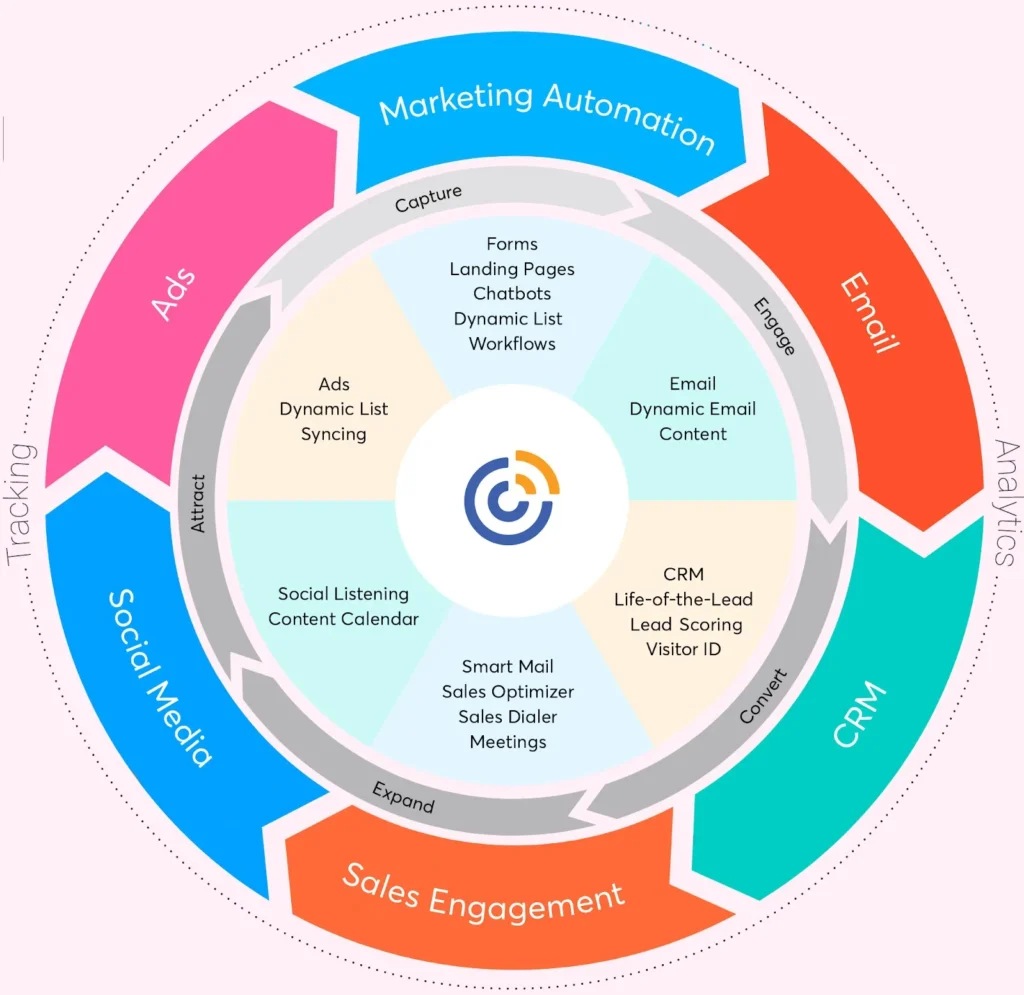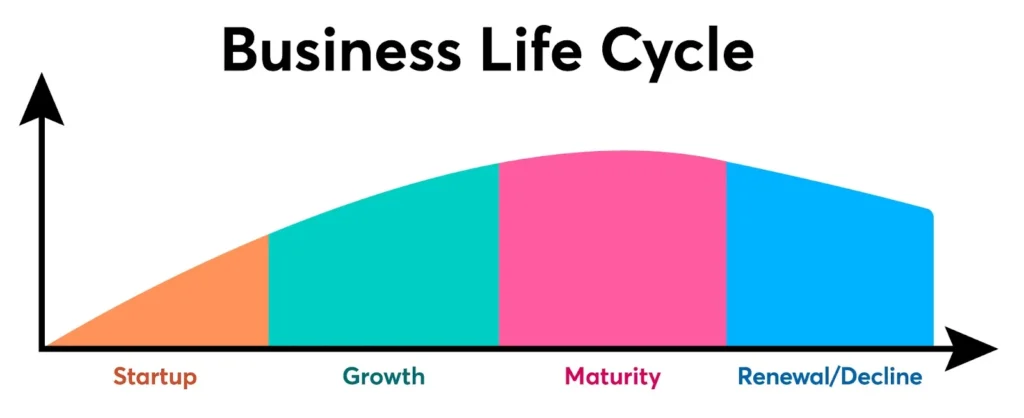Revenue growth is a crucial indicator of a company’s health and performance, representing the increase in a company’s sales over a specific period. This article will delve into the meaning of growth revenue, its importance, strategies to achieve it, and examples from various industries, offering a comprehensive overview of this essential business concept.
What is Revenue Growth?
It refers to the increase in a company’s sales or revenue compared to a previous period, typically expressed as a percentage. It can result from various factors, including increased sales volume, higher prices, the introduction of new products or services, and market expansion. Understanding growth revenue helps businesses evaluate their operational efficiency and market position, allowing them to make informed decisions.
Key Metrics Related to Growth Revenue
- Revenue Growth Rate: This metric measures the percentage increase in revenue over a specific period. It helps assess how quickly a company is expanding.
- Compound Annual Growth Rate (CAGR): This metric shows the mean annual growth rate over time, considering the effect of compounding. It is particularly useful for understanding long-term trends.
- Year-Over-Year (YoY) Growth: This compares revenue from one year to the next, providing insights into seasonal trends and overall performance.

Importance of Revenue Generation
Business growth is vital for several reasons:
- Sustainability: Consistent financial performance ensures the company can cover its expenses, invest in new projects, and remain competitive in the market.
- Investor Confidence: Investors typically favor companies with strong growth indices as it indicates potential for profit and long-term viability.
- Market Share Expansion: Growing revenue can signify that a company is increasing its market share, which can lead to increased brand recognition and consumer loyalty.
- Resource Allocation: Revenue optimization allows businesses to reinvest in operations, technology, and talent, driving further growth.
Strategies for Achieving Business Growth
Driving revenue expansion is essential for businesses aiming to achieve long-term sustainability and success. Here are detailed strategies that can help organizations enhance their ROI streams effectively:
1. Product Diversification
Overview: Product diversification involves expanding a company’s product line to include new offerings. This strategy not only attracts new customers but also caters to the evolving needs of existing ones.
Implementation:
- Market Research: Conduct thorough market research to identify gaps and opportunities in the current market. Understanding customer preferences and pain points can guide product development.
- Cross-Selling and Upselling: Utilize existing customer relationships to introduce new products. For example, if a customer purchases a laptop, offering accessories like bags or software can increase sales.
- Case Study – Amazon: Initially focused on selling books, Amazon successfully diversified its product offerings to include electronics, clothing, and even cloud computing services through Amazon Web Services (AWS). This diversification strategy not only attracted a broader customer base but also positioned Amazon as a leader in multiple industries, significantly boosting its value proposition.
2. Market Expansion
Overview: Market expansion involves entering new geographical or demographic markets. This strategy can lead to increased sales as businesses tap into new customer segments.
Implementation:
- Geographical Expansion: Identify and assess potential new regions or countries where the product or service may have demand. This may involve understanding local regulations, cultural preferences, and competition.
- Targeting New Demographics: Modify marketing strategies to appeal to different age groups, income levels, or interests. This can include tailored advertising and promotional campaigns.
- Case Study – Airbnb: By expanding its services into international markets, Airbnb significantly increased its customer base. The company localized its offerings to cater to different cultures, resulting in heightened customer engagement and sales growth.
3. Improving Customer Experience
Overview: Enhancing customer experience is critical to increasing sales and fostering customer loyalty. A positive experience encourages repeat business and referrals.
Implementation:
- Customer Feedback: Implement regular feedback mechanisms to understand customer satisfaction. Surveys, reviews, and focus groups can provide valuable insights for improvement.
- Personalization: Utilize data analytics to tailor services and communications to individual customer preferences, enhancing their overall experience.
- Case Study – Apple: Apple invests heavily in customer service and product design, creating an ecosystem that enhances user experience. Their focus on intuitive design and excellent customer support has fostered strong brand loyalty, resulting in sustained financial growth.

4. Utilizing Technology
Overview: Leveraging technology can streamline sales processes, improve efficiency, and enhance customer engagement, significantly boosting operational metrics.
Implementation:
- CRM Systems: Implement Customer Relationship Management (CRM) systems to track customer interactions, preferences, and sales data, enabling more effective marketing and sales strategies.
- Automation: Use marketing automation tools to manage campaigns, track performance, and nurture leads more effectively.
- Case Study – Salesforce: Salesforce has revolutionized the sales process with its cloud-based CRM platform, allowing businesses to streamline sales operations, improve customer relationships, and ultimately drive growth revenue.
5. Pricing Strategies
Overview: Effective pricing strategies can significantly influence consumer purchasing behavior and maximize revenue.
Implementation:
- Value-Based Pricing: Set prices based on the perceived value to the customer rather than just the cost of production. This requires understanding customer needs and how much they are willing to pay.
- Dynamic Pricing: Use data analytics to adjust prices based on demand fluctuations, competition, and market trends.
- Case Study – Netflix: Netflix employs a value-based pricing model that aligns its subscription fees with the perceived value of its content library. Regular evaluations of its pricing strategy ensure that it remains competitive and appealing to customers, thereby driving sales funnel.
6. Strategic Partnerships and Acquisitions
Overview: Forming partnerships or acquiring other businesses can enhance a company’s market presence and capabilities, leading to increased revenue opportunities.
Implementation:
- Identify Complementary Businesses: Seek out companies with products or services that complement your offerings. Partnerships can provide cross-promotional opportunities and access to new customer bases.
- Mergers and Acquisitions: Consider acquiring companies that can enhance your technology, product offerings, or market access. This requires thorough due diligence to ensure alignment with your business goals.
- Case Study – Google: The acquisition of YouTube allowed Google to significantly boost its ad ROI by tapping into the video content market. This strategic move expanded its product offerings and provided a lucrative platform for advertisers.
7. Focus on Subscription Models
Overview: Subscription-based models provide a reliable and predictable financial stream, helping businesses achieve consistent expansion & growth.
Implementation:
- Develop Subscription Services: Identify areas where subscription models can be applied, such as software, media, or product delivery services.
- Tiered Pricing: Offer various subscription tiers to cater to different customer segments and maximize financial returns potential.
- Case Study – Adobe: Adobe successfully transitioned from a one-time software purchase model to a subscription-based model for its Creative Cloud services. This shift has led to significant and consistent product line growth, as customers are willing to pay for continuous access to the latest tools and features.
Examples of RG in Action
1. NVIDIA
Overview: NVIDIA has established itself as a powerhouse in the technology sector, particularly known for its graphics processing units (GPUs).
Key Factors for Growth:
- Dominance in the GPU Market: NVIDIA’s GPUs are widely used in gaming, professional visualization, and data centers. The surge in gaming and the need for high-performance computing have driven strong sales.
- Expansion into AI Technologies: The company has made significant investments in artificial intelligence (AI) and machine learning, creating products and solutions that cater to the growing demand in these sectors.
- Financial Performance: In its latest quarterly report, NVIDIA revealed growth in revenue of over 40%, driven by an increase in demand for AI-related products, particularly in data centers. This growth trajectory has positioned NVIDIA as a leader in both the gaming and AI markets.
2. Mastercard
Overview: Mastercard is a global leader in payment processing and digital payment solutions, continuously innovating to meet market demands.
Key Factors for Growth:
- Digital Payment Solutions: Mastercard has adapted to the digital payment landscape by enhancing its technology and services. This includes contactless payments, mobile wallets, and online payment processing.
- Strategic Partnerships: Collaborations with fintech companies and financial institutions have expanded Mastercard’s reach and capabilities. For instance, partnerships with companies like PayPal and Apple Pay have bolstered its position in the digital payments ecosystem.
- Consistent Growth Revenue: Mastercard has reported double-digit profit maximization, over several quarters, with a significant increase in transaction volumes, especially during the pandemic, as consumers shifted to online shopping and digital transactions.
3. Tesla
Overview: Tesla has become synonymous with electric vehicles (EVs) and sustainable energy solutions, transforming the automotive industry.
Key Factors for Growth:
- Increasing Demand for EVs: With a growing global emphasis on sustainability, Tesla has seen a surge in demand for its electric vehicles. The introduction of models like the Model 3 and Model Y has expanded its customer base significantly.
- Global Expansion: Tesla has made strategic moves to enter new markets, including China and Europe, where demand for EVs is rapidly increasing. The establishment of Gigafactories in these regions has enabled localized production and reduced shipping costs.
- Innovative Technology and Commitment to Sustainability: Tesla’s focus on technological advancements, such as battery efficiency and autonomous driving capabilities, has positioned it as a leader in innovation. In its latest financial reports, Tesla reported record customer acquisition, attributed to increased vehicle deliveries and energy product sales.
4. Amazon
Overview: Amazon is a global leader in e-commerce and cloud computing, consistently demonstrating impressive buisiness expansion
Key Factors for Growth:
- Diverse Product Offerings: Amazon’s extensive product range—from electronics to household goods—caters to a vast audience. This diversification ensures a steady stream of revenue from various sectors.
- Amazon Web Services (AWS): AWS has emerged as a significant revenue driver for Amazon, providing cloud computing solutions to businesses worldwide. The demand for cloud services has grown exponentially, contributing to AWS’s robust growth.
- Innovative Customer Experience: Amazon’s commitment to enhancing customer experience through personalized recommendations, fast shipping, and services like Amazon Prime has fostered customer loyalty and repeat business. In its latest earnings report, Amazon reported over 20% financial expansion, driven by strong sales in both retail and AWS.
5. Apple
Overview: Apple is a technology giant renowned for its innovative products, including iPhones, iPads, and Macs.
Key Factors for Growth:
- Ecosystem of Products and Services: Apple has successfully created a cohesive ecosystem that encourages customers to purchase multiple devices and services. The integration of hardware, software, and services (like Apple Music and iCloud) enhances customer retention.
- Strong Brand Loyalty: Apple’s focus on design, quality, and user experience has cultivated a loyal customer base. Regular product launches, such as new iPhone models, generate substantial buzz and sales.
- Financial Performance: In its latest quarterly earnings, Apple reported impressive growth in revenue, primarily driven by the sales of iPhones and services, showcasing the strength of its brand and ecosystem.
6. Netflix
Overview: Netflix has revolutionized the entertainment industry with its streaming service, leading to substantial growth.
Key Factors for Growth:
- Original Content Production: Netflix’s investment in original programming, such as popular series and films, has attracted a vast subscriber base. High-profile releases often generate significant media attention, boosting subscriptions.
- Global Expansion: Netflix has expanded its services to over 190 countries, adapting its content to cater to diverse audiences. This globalization strategy has fueled subscriber growth worldwide.
- Subscription Growth: Netflix continues to report growth in subscriber numbers, leading to increased revenue. The company’s focus on providing value through quality content and user experience has helped it maintain its position as a market leader.
7. Google (Alphabet Inc.)
Overview: Google, under Alphabet Inc., has seen substantial increase in financial value through its advertising and technology services.
Key Factors for Growth:
- Dominance in Digital Advertising: Google Ads is a leading platform for businesses looking to reach consumers online. The company has continually improved its advertising technology, enhancing targeting capabilities and ROI for advertisers.
- Expansion of Services: Beyond search, Google has diversified into cloud computing (Google Cloud), hardware (Pixel phones and Google Nest), and other technology services, contributing to its revenue streams.
- Strong Financial Performance: Alphabet has reported consistent investment growth, largely driven by its advertising business, which accounts for the majority of its income. The latest earnings report highlighted a significant increase in ad revenue, showcasing Google’s resilience and adaptability in a competitive market.
How to Increase Revenue Growth?
Increasing revenue analysis is a key objective for businesses aiming to enhance profitability and expand their market presence. Here are several effective strategies to achieve this goal:
1. Enhance Product or Service Offerings
- Diversification: Introduce new products or services that complement your existing offerings. For instance, if you run a clothing store, consider adding accessories or footwear.
- Quality Improvement: Continuously improve the quality of your existing products to increase customer satisfaction and loyalty.
2. Expand Market Reach
- Geographic Expansion: Enter new geographic markets, whether locally, nationally, or internationally, to attract a broader customer base.
- Target New Demographics: Identify and target new customer segments that may benefit from your products or services.
3. Optimize Pricing Strategies
- Dynamic Pricing: Adjust prices based on market demand, competition, and customer behavior to maximize revenue.
- Bundling: Offer product bundles at a discounted rate to encourage customers to purchase more items at once.
4. Leverage Digital Marketing
- SEO and Content Marketing: Improve your website’s search engine ranking to attract organic traffic. Create valuable content that addresses customer needs.
- Social Media Advertising: Use targeted ads on platforms like Facebook and Instagram to reach potential customers and drive sales.
5. Improve Customer Experience
- Personalization: Tailor experiences based on customer preferences and purchase history to enhance engagement and satisfaction.
- Excellent Customer Service: Provide responsive and helpful customer service to foster loyalty and repeat purchases.
6. Adopt Subscription Models
- Recurring Revenue: Transition to subscription-based services, which can provide a predictable and stable revenue stream. This is common in industries like software, entertainment, and personal care.
7. Utilize Technology
- CRM Systems: Implement Customer Relationship Management (CRM) software to analyze customer data, track sales, and identify opportunities for upselling and cross-selling.
- E-commerce Platforms: Optimize your online store to improve user experience and increase conversion rates.
8. Foster Strategic Partnerships
- Collaborations: Partner with other businesses to co-market products, expand distribution channels, or enhance your service offerings.
- Affiliate Programs: Create affiliate marketing programs that incentivize others to promote your products or services.
9. Monitor Financial Performance
- Key Performance Indicators (KPIs): Regularly track KPIs related to sales, customer acquisition, and retention to identify trends and areas for improvement.
- Revenue Forecasting: Use forecasting tools to predict future sales and adjust strategies accordingly.
10. Invest in Employee Training
- Sales Training: Equip your sales team with the necessary skills and knowledge to effectively engage and convert leads.
- Customer Service Training: Ensure staff is trained to provide exceptional service, which can lead to increased customer satisfaction and loyalty.
In today’s dynamic business landscape, understanding and effectively implementing operational efficiency strategies is crucial for sustainable success. From product diversification and market expansion to leveraging technology and enhancing customer experience, companies across various industries are continuously adapting to meet changing consumer demands and market conditions. At Agility Growth Partners, we recognize the vital role that innovative growth strategies play in helping businesses thrive. By focusing on tailored solutions that drive revenue, we empower our clients to achieve their goals and unlock their full potential.
The remarkable performance demonstrated by industry leaders like NVIDIA, Mastercard, Tesla, Amazon, Apple, Netflix, and Google serves as a testament to the effectiveness of these strategies. By focusing on innovation, strategic partnerships, and a customer-centric approach, businesses can not only drive performance maximization but also position themselves as leaders in their respective fields.
As organizations navigate the complexities of the market, embracing a proactive and adaptive mindset will be essential for achieving long-term success and profitability. The journey toward sustainable business growth is ongoing, and with the right strategies in place, businesses like Agility Growth Partners are poised to thrive in the ever-evolving landscape of the industry.







